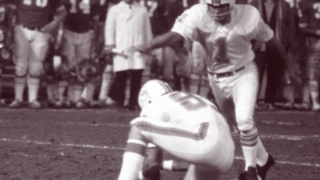Before the era of multi-million dollar contracts, personalized nutrition plans, and wearable biometric sensors, the concept of an NFL preseason was, to put it mildly, a bit more rustic. The history of NFL training camp is not a story of linear progression, but a meandering, often comical, journey from what resembled a working-class men’s retreat to the hyper-scientific, high-stakes operation it is today. It’s a tale of grit, sweat, questionable dietary choices, and the slow, begrudging acceptance that maybe, just maybe, players shouldn’t smoke cigarettes during stretching.
The Primordial Ooze: Two-a-Days and Survival of the Fittest
In the league’s formative years, training camp was less about athletic optimization and more about basic conditioning and roster-building. Players, many of whom held down regular jobs in the offseason as construction workers, farmers, or even funeral directors, would show up to camp to shed their “civilian” weight and get back into something resembling football shape. The locations were often spartan, held at small, obscure college campuses where the dorms were hot, the food was starchy, and the entertainment was nonexistent. This was by design. Coaches like the legendary Vince Lombardi believed that isolation and misery forged championship character. His Green Bay Packers famously trained in the sweltering humidity of De Pere, Wisconsin, a place where the primary activities were practicing football and swatting away mosquitos.
The centerpiece of this era was the brutal, twice-a-day full-contact practice, affectionately known as “two-a-days.” These sessions were gladiatorial ordeals designed to test toughness and weed out the weak. Under a blazing summer sun, players would pound on each other for hours, often with water breaks being treated as a sign of moral failing. The legendary stories from this period are legion. Think of Chuck Noll’s famously grueling camps with the Pittsburgh Steelers, where the goal was not just to prepare for the season but to intimidate the opposition through sheer force of will developed in the August heat. It was a philosophy of attrition, where the last men standing were deemed worthy of wearing the uniform. The humor of this era is purely of the gallows variety; players joking about hiding from coaches, the “mystery meat” in the cafeteria, and the collective sigh of relief when the final whistle of a two-a-day blew.
The Slow Thaw: The Rise of the Offseason Program and the Death of the Beer-for-Lunch Diet
For decades, the idea of a player training year-round was laughable. They were expected to show up to camp and get in shape. However, as the game grew faster, more complex, and infinitely more lucrative, this approach became untenable. The 1970s and 80s saw the gradual emergence of “voluntary” offseason workout programs. These were, of course, about as voluntary as paying taxes. Coaches and front offices began to expect a higher baseline level of fitness from their players upon arrival at camp.
This shift also began to slowly change the culture. While tales of players like John Matuszak of the Oakland Raiders treating training camp like a month-long frat party are legendary, the tide was turning. The league started to understand the value of nutrition, though the application was often crude. Gone were the days when a post-practice meal might consist of a steak, a baked potato, and a couple of beers. In their place came rudimentary nutritional guidance, often boiling down to “eat more chicken breasts.” The science was still in its infancy, but the core idea—that what a player put in his body mattered—was taking hold. This was a tough sell for many old-school players who viewed a salad as something their food eats. The transition was awkward, filled with veterans sneaking junk food into their dorm rooms and grumbling about the new-age focus on things other than hitting people.
The Modern Era: The CBA, Sports Science, and the Bubble-Wrapped Athlete
The single greatest change to the modern training camp came not from a coach or a scientist, but from a lawyer. The NFL’s Collective Bargaining Agreements (CBAs), particularly the landmark 2011 agreement, fundamentally reshaped the preseason. Player safety, once an afterthought, became a primary concern. The CBA drastically limited the amount of full-contact practice allowed. Two-a-days were effectively legislated out of existence; the second practice of any day could not involve pads. The number of padded practices throughout camp and the regular season was strictly capped.
This forced a revolution in coaching. No longer able to rely on brute force and physical repetition, teams had to get smarter. The era of sports science dawned. Teams now employ armies of specialists: nutritionists, sports psychologists, sleep experts, and data analysts. Players are outfitted with GPS trackers that monitor their every movement, measuring exertion levels, speed, and distance covered. Coaches no longer guess if a player is tired; they have a mountain of data telling them exactly what a player’s “load” is.
Today’s training camp is a marvel of efficiency and caution. Every minute is scheduled, every meal is calibrated, and every player is monitored. The grueling, character-building camps of Lombardi have been replaced by a system designed to deliver a perfectly tuned, healthy roster to Week 1. While some old-timers may lament the “softening” of the game, the result is a faster, more skilled, and ultimately more durable product on the field. The humor has changed, too. It’s less about surviving the coach’s wrath and more about the absurdity of the technology—players comparing their “sleep scores” or joking about the drone filming their every move in practice. The journey from a sweltering field in rural Wisconsin to a state-of-the-art performance center is complete. While the methods have changed beyond recognition, the goal remains the same: to forge a team in the heat of summer, ready for the battles of the fall.



